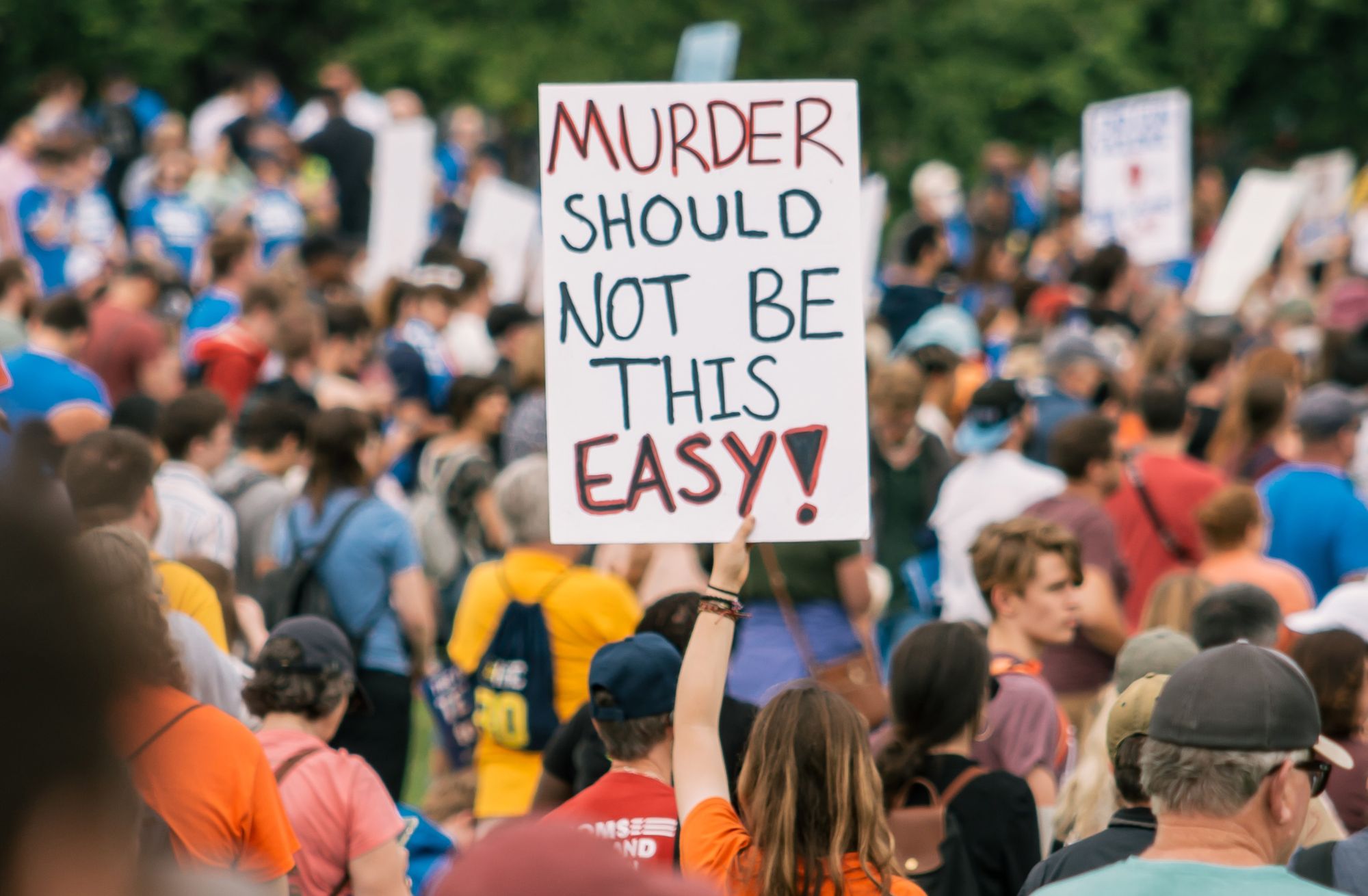Using the Second Amendment to Battle the First Amendment
Another example of the thousand cuts extremist Republicans employ to sabotage democracy.

In Imperial China, death by a thousand cuts was the method used to execute convicted criminals by slicing their flesh. In the U.S. today, it seems the Republican party is working to sabotage democracy in many places and in thousands of ways. Their attacks on truth, voting rights, and personal freedoms are at work in cities, counties, and states around the country. Judging from their actions, it also looks like they’ve crafted initiatives to protect killers of peaceful protestors, unarmed people of color, and school children by weaponizing the Second Amendment of the U.S. Constitution.
The signature of framers of the civil rights movement was the use of civil disobedience, and non-violent, peaceful protests. Despite police use of guns, dogs, and water hoses to attack the protestors, they persevered. As Texas Governor Greg Abbott pushes to pardon Daniel Perry who went to a BLM protest he didn’t support and killed a man he’d never met, I realized two things; evil has no bottom, and this whole gun-obsession plays a crucial role in right-wing efforts to silence the First Amendment right to free speech, a tenet of democracy.
Another killer, Kyle Rittenhouse, under some delusional claim as a “protector” of property, went to a rally he didn’t support (a protest against police killing an unarmed Black man), armed with an AR-15 rifle at age 17.
Obviously, guns shouldn’t have a place at a peaceful protest other than by police truly committed to protecting those exercising their constitutional rights.
Let’s Unpack the Amendments used in the Battle of Rights
The First Amendment States: Congress shall make no law respecting an establishment of religion or prohibiting the free exercise thereof; or abridging the freedom of speech, or of the press; or the right of the people peaceably to assemble, and to petition the Government for a redress of grievances.
The motivation behind it: The ostensible Founding Fathers left Europe because they didn’t want government-favored churches but the freedom of choice in religion. They wrote the First Amendment in response to their experiences in Europe of religious conflict and oppression. They didn’t want religious persecution here. The language proved nobler than the writers as they proceeded to enslave Africans and to dictate the form of religion they were allowed to practice. But at any rate, the language is there, and the purpose of the First Amendment is to protect many of the civil rights associated with life as an American including free speech, freedom of religion, and freedom of the press. It also addresses the right to peaceful protest and to petition the government.
The Second Amendment States: A well-regulated Militia, being necessary to the security of a free State, the right of the people to keep and bear Arms, shall not be infringed.
We may as well call this one the most debated one-liner in American history. While it implies people should have the right to bear arms, it doesn’t specify much else.
Court cases and amendments to the amendment attempt to clarify federal, state, and government action, what and who are militia, types of firearms, and laws at all levels governing the possession and sale of firearms.
The Second Amendment is divided into two parts:
The prefatory clause explains why a well-regulated militia is needed for protection of the states. And the operative clause gives the people the right to bear arms.
Staff writers of Findlaw.com write that historians agree the goal of the Second Amendment was to prevent the need for a U.S. professional, standing army and not intended to grant the right for private individuals to keep weapons for self-defense. They conclude, “the opposing arguments, the states’ rights thesis emphasized the importance of the prefatory clause, arguing that the purpose of the clause was to protect the states in their authority to maintain formal, organized militia units. The individual rights thesis emphasized the operative clause, so that individuals would be protected in the ownership, possession, and transportation of firearms. Whatever the Amendment meant, it was seen as a bar only to federal action, not state or private restraints.”
In 2008, the Supreme Court decided that Second Amendment rights applied to individuals. (District of Columbia v. Heller ) The Court concluded the purpose of the right to keep and bear arms went beyond militia service and included self-defense.
Rooted in fears that the federal government would take away guns from individuals, the right to bear arms became the protection against overreaching federal authority. And to come full circle, killers and those against the regulation of the sales and use of firearms argue today that there are no limits to the type of firearms or their use.
I might be guilty of over-simplifying the sad absurdity of this debate; but to my mind, there is no logic in allowing any person of any mental state to hold any type of gun, legally. And does it seem to anyone else that the elephant on the table is also an analysis of how a gun is being used? This brings us back to my point; carrying a gun to a peaceful protest when you are not there in an official capacity to protect the protestors---is heinous. The motivation? I assume it is to repress free speech and the rights afforded to citizens by the First Amendment—one of a thousand ways to stifle a major cornerstone of democracy.
